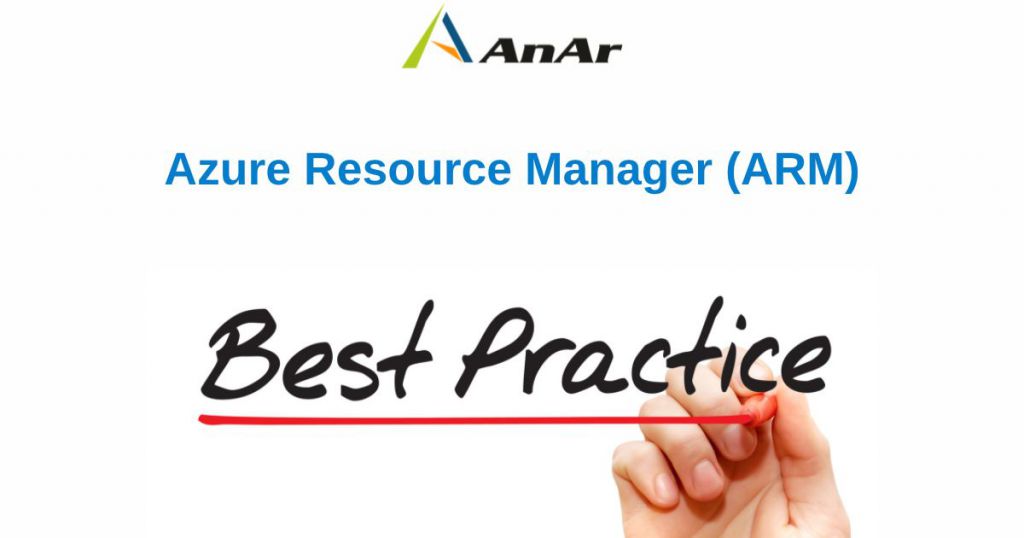When interacting with the Microsoft Azure cloud, you must first build Azure resources. Microsoft created Azure resource manager to manage these resources, a more advanced, less expensive, and quicker way to configure, deploy, and manage resources on Azure.
azure resource management
Azure Resource Manager groups multiple resources using logical containers; these containers group Azure assets together. Rather than piecing together resources individually, resource groups enable administrators to create cloud instances for specific use cases, increasing the opportunity for automation and can make Azure deployments faster and easier. All resources in a group must have the same lifecycle and be able to be deployed, updated, and destroyed at the same time. At any time, resources can be added, relocated, or withdrawn.
This article explores the fundamental concepts, benefits of Azure Resource Manager, and practices to follow while using ARM templates.
So, what is Azure Resource Manager (ARM)?
Azure Resource Manager (ARM) is an Azure service that uses an Infrastructure-as-code model (IaC) to manage and deploy resources. It enables you to centralize Azure resource management, deployment, and security using features like access control, locks, tags, etc.
There are some specific terminologies that you might not be familiar with if you are new to using Azure services:
Resource
A resource in Azure can be a manageable asset. These assets include virtual machines (VMs), networks, storage accounts, web applications, and databases.
Resource Group
These are logical containers that can group all related resources. These groups allow you to manage multiple resources collectively.
Resource Provider
A service that provides access to Azure resources. For example, Microsoft.Compute is a well-known resource provider that offers virtual machine resources. Microsoft.Storage is another popular resource provider.
Resource Manager template
A file that specifies how to deploy one or more resources to a management group, resource group, tenants, or subscription. These files are in JavaScript Object Notation (JSON).
Declarative syntax
The Resource Manager template uses declarative syntax. It allows you to specify resource management without knowing any programming commands.
Azure Resource Manager (ARM) Architecture
The Azure Resource Manager (ARM) architecture diagram and its components are displayed below. As seen in the picture, Azure Subscription has different resource groups. You can create resource instances of these resource groups using available resource types.



The ARM then authenticates the request received through SDKs & APIs and passes the requests to the Azure service, performing specific operations. Since the same API handles the queries, you can expect consistent results and capabilities across all tools.



Benefits of Azure Resource Manager
ARM has many benefits in simplifying resource management and deployment. These benefits are as follows-
Centralized management
azure resource management
You can manage resources with ARM from a centralized dashboard. It allows you to integrate any resources, including services from the Azure Marketplace and third-party apps. It also improves visibility into resource configuration and enables you to limit administrative activities to a single tool.
Security
ARM offers a wide range of tools that enable enterprises to easily manage these distributed applications through role-based access control (RBAC) or OAUTH authentication. It gives you granular control over resources and limits who can adjust which workloads, including the ability to prevent resource modification or deletion.
Additionally, it also logs all the events, and there is an audit trail for every activity, event, and user. You can also freeze critical resources, making them impossible to modify deliberately or accidentally.
Templates
Azure Resource Manager templates allow you to clearly and consistently define and deploy any Azure resources you require. You can add details like names, networks, security settings, locations, and availability zones. You can use defined templates to deploy similar resources repeatedly, as needed for distributed applications, testing, or development.
You can also customize ARM Templates through visual studio, visual studio code, or the Azure Portal. Furthermore, you can fully automate ARM template deployment, and ARM templates are frequently available in Azure Marketplace solutions if you use third-party technologies.
Best Practices of ARM Templates
Before exploring ARM Template best practices, we must first understand templates in more detail.
So, what is Azure Resource Manager (ARM) Template?
Templates in Azure Resource Manager are JavaScript Object Notation (JSON) files that define the resource group, its resources, characteristics, and dependencies. These templates use a declarative syntax to specify the resources and their attributes.
Only after the resource manager validation; the template is ready for deployment. As a result, the deployment is unlikely to fail in the middle.
ARM Templates contain the following parts-
- Parameters — These are values that allow you to utilize the same template in different deployment settings.
- Variables — These reusable values in multiple templates. Variables can also use values from Parameters.
- User-Defined Function — These functions enable you to define customized elements to simplify templates.
- Resources — This part specifies all the Azure resources ready for deployment.
- Outputs — It is the return value of the deployed resources.
There are various best practices to follow when designing ARM templates. These techniques can help simplify management and guarantee efficient resource configuration.
Template limits
Generally, you should keep your templates under 4MB, with parameters smaller than 64KB. You should apply these constraints to the size of the final template, which should contain any iterative resource declarations, parameters, or variables.
There are some hard limits to the template that you should keep in mind. Like limits restricts you-
- to 24,576 characters limit in the template declaration
- to 64 output value limits
- to a total of 800 resources (includes copy count)
- to only 256 variables
- to 256 parameters limit
Resource groups
Resource groups also store the metadata for the resources you create, storing the metadata in the same place as your group. If a group area becomes inaccessible, it will not be possible to manage those resources without restoring the access.
Make a copy of your metadata and keep it in the failover region if it requires constructing a failover for a resource group. This strategy will enable you to regain control even if the original resource group becomes inaccessible.
Consider YAML
JSON is the format for ARM templates. This approach works well for simple templates, but when deployment complexities and resources adds-up, these templates become less readable to humans.
While it is impossible to change this format, you can write these templates in YAML and convert them to JSON before beginning the deployment. By enabling you to comment on why you’re defining the resources in a particular manner, YAML helps in improving the readability of templates.
Avoid linked templates unless necessary.
Linked templates are a feature of the Azure Resource Manager, and it enables you to divide resources into individual templates. This linkage is good, except it requires templates to be publicly open or your deployment pipeline to be exposed.
While utilizing connected templates, you can only use parameter URIs or parameter objects. It is not possible to combine formats as it limits your ability to manage sensitive data.
Instead of attempting to work around these limitations, consider using standard templates. Use pipelines to control deployment and make sure to deploy dependent templates together, which will allow one to achieve the same result as linked templates with better security.
Conclusion
The Azure Resource Manager is a new way of creating and managing Azure Cloud applications. It is a server-based system that enables you to deploy, manage and update your cloud applications. Microsoft developed it to cut down on time it takes for people to manage their cloud applications, which means that you can run your business more efficiently. We encourage you to contact us if you want to know more about Azure Resource Manager and our cloud services.






